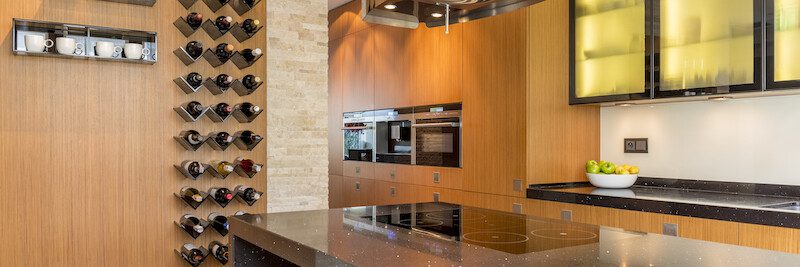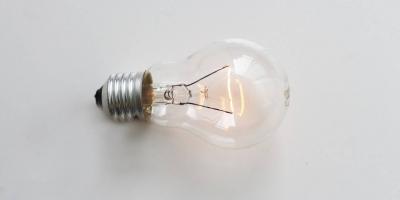Advantages and Disadvantages of LED Lights
LED lights have gained a lot of popularity over the recent years, thanks to their high levels of efficiency. Today, this incredible lighting technology is applied in a broad range of areas including small and large lamps, large video screens, traffic lights and as indicator lamps for electronic devices.
What are LED lights?
Typically, a light-emitting diode refers to a 2-lead semiconductor light source. A diode is an electric device or electrical component that features two electrodes through which electric current flows. This electrical energy flows in only a single direction; in via the anode an out through the cathode.
Diodes are made of semiconductor materials such as selenium and silicon. If you didn’t know, these are materials which conduct electricity in some conditions but not in others, for instance, at certain levels of current, light intensities or voltages.
A light-emitting diode is, therefore, a semiconductor device which emits visible light if electrical current passes through it. It is the opposite of the photovoltaic cell, which is essentially a component which converts visible light into electrical current. It is no secret that LED lighting has immensely transformed the lighting world for the better, and this is why its practical applications are almost limitless. Let’s examine the pros and cons of LED lights.

Pros
1) They are extremely energy efficient
This is arguably the biggest advantage of using LED lighting. LED lights are more than 80% per cent more energy efficient than conventional lightings such as incandescent and fluorescent lights. It has been proven that nearly 95% of the energy in LED is converted into light. This implies that only 5% of the energy goes to waste. On the other hand, traditional lighting converts 90% of the energy to heat and only 5% of the energy into the light!
It is also imperative to note that LED lights draw relatively less amount of power compared to their traditional counterparts. Using less energy does not only reduce your energy bills but equally reduces the global demand for power, a phenomenon that limits the emission of greenhouse gases.
2) They are durable
You always want to invest your money on something that can potentially serve you for an extended period. LED lights last up to six times longer than traditional lighting thus eliminating the need for frequent replacements. As opposed to ordinary lighting systems, LEDs merely dim over time and don’t fail or burn out. They have an extended lifespan between thirty thousand to fifty thousand hours. This is a huge beneficial factor, especially in commercial settings. With a relatively long operational life, LED lights can reduce the labour costs of replacing bulbs.
It is also critical to note that LED lights don’t feature either filaments or glass enclosures and are thus not prone to breakage. What’s more, they are extremely resistant to vibrations and other types of impacts. Simply put, they built to last!
3) Instant brightness
Most types of traditional lighting options often don’t provide complete brightness immediately after you have switched them on. They will need up to two minutes to achieve optimum light output. LED lights will achieve a 100% brightness level almost instantly.
4) They are ecologically friendly
LED lights do not contain any form of toxic chemicals and is therefore friendly to the environment. On the other hand, a number of conventional fluorescent lighting devices are filled with a multitude of harmful substances such as mercury. By using LED lights, you’ll reduce your carbon footprint incredibly.
5) They are versatile
This makes them ideal for use under both low and cold outdoor temperature settings. You can use them in freezer rooms and other extreme outdoor winter settings. The same cannot be achieved with their traditional counterparts.
6) They generate less heat
Another notable benefit offered by LED lights is that they don’t generate a lot of heat like ordinary lighting fixtures. If you live in a hot region where you can only install lighting devices that don’t create unnecessary heat, then LEDs are your best option.
7) Endless designs
Well-designed LED lighting systems can achieve incredible light effects not only for the eye, but also for your mind and overall mood. LEDs can be customised in a variety of shapes to produce extremely efficient illumination. This technology is currently used in classrooms, aeroplanes and many more areas to produce amazing lighting systems.
Cons
1) They are relatively expensive
The major downside to LED lights is that they are initially expensive. However, considering their high level of efficiency and dropping prices due to the increase in better technology, the price should not deter you from installing them.
2) The power supplies are not standardised in LED kits
What this means is that in the event of a failure, the globe together with the power supply must be replaced.
3) Failure under high temperatures
When used in extreme weather conditions such as very high temperatures, they may fail prematurely.
4) Not all LED lights are dimmable
You won’t be able to have the luxury of dimming your LED lights to change the mood in the room for certain events. The LED lights will either have to be off or on.
There is no doubt that LED lights are an attractive alternative for your home, office or building. If you are looking to replace or install LED lights in your Sydney home then contact Gordon’s Powers on 9199 7480. We have the most competitive prices for our amazing range of LEDs. We are also happy to provide you with our other custom services for your electrical needs.










